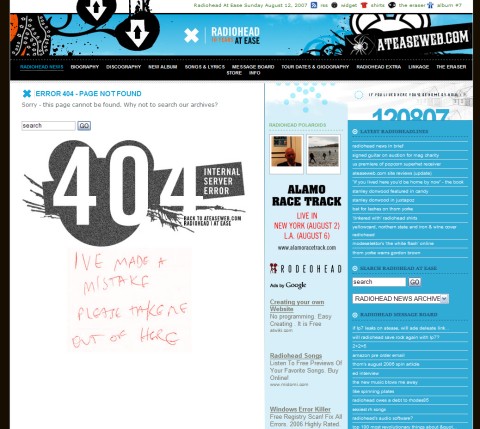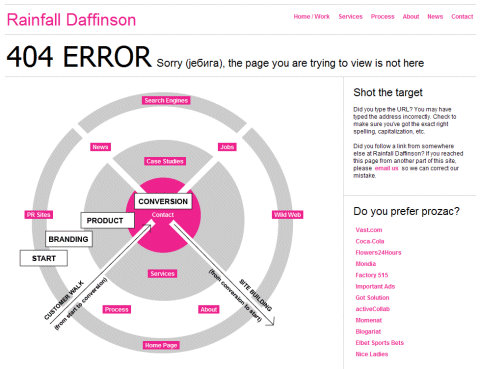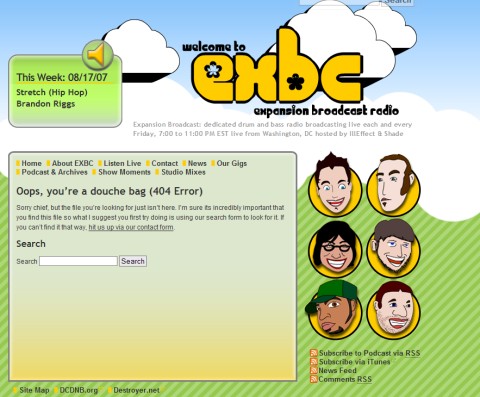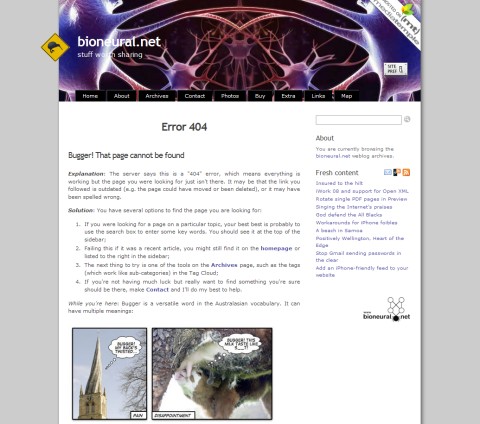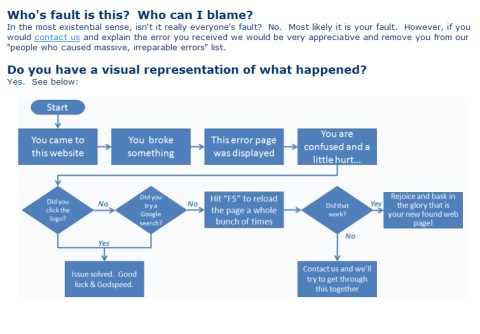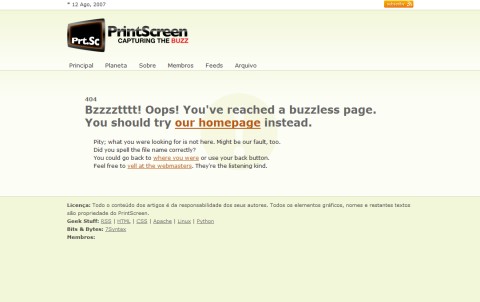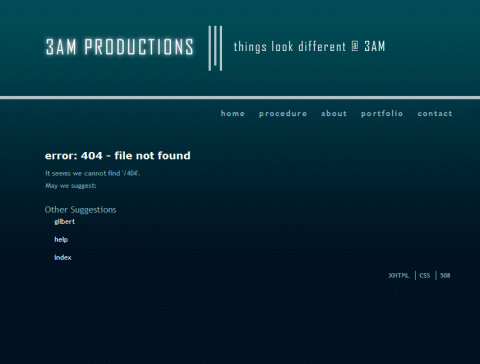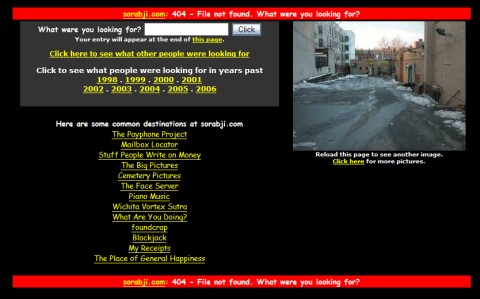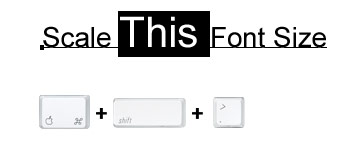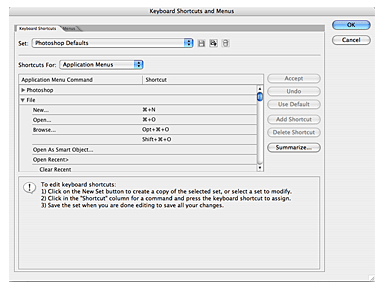Written by AMANDA WITHERELL Illustration by Mirissa Neff

There are a handful of freedoms that have almost always been a part of American democracy. Even when they didn’t exactly apply to everyone or weren’t always protected by the people in charge, a few simple but significant rights have been patently clear in the Constitution: You can’t be nabbed by the cops and tossed behind bars without a reason. If you are imprisoned, you can’t be incarcerated indefinitely; you have the right to a speedy trial with a judge and jury. When that court date rolls around, you’ll be able to see the evidence against you.
The president can’t suspend elections, spy without warrants, or dispatch federal troops to trump local cops or quell protests. Nor can the commander in chief commence a witch hunt, deem individuals “enemy combatants,” or shunt them into special tribunals outside the purview of our 218-year-old judicial system.
Until now. This year’s Project Censored presents a chilling portrait of a newly empowered executive branch signing away civil liberties for the sake of an endless and amorphous war on terror. And for the most part, the major news media weren’t paying attention.
“This year it seemed like civil rights just rose to the top,” said Peter Phillips, the director of Project Censored, the annual media survey conducted by Sonoma State University researchers and students who spend the year patrolling obscure publications, national and international Web sites, and mainstream news outlets to compile the 25 most significant stories that were inadequately reported or essentially ignored.
While the project usually turns up a range of underreported issues, this year’s stories all fall somewhat neatly into two categories ? the increase of privatization and the decrease of human rights. Some of the stories qualify as both.
“I think they indicate a very real concern about where our democracy is heading,” writer and veteran judge Michael Parenti said.
For 31 years Project Censored has been compiling a list of the major stories that the nation’s news media have ignored, misreported, or poorly covered.
The Oxford American Dictionary defines censorship as “the practice of officially examining books, movies, etc., and suppressing unacceptable parts,” which Phillips said is also a fine description of what happens under a dictatorship. When it comes to democracy, the black marker is a bit more nuanced. “We need to broaden our understanding of censorship,” he said. After 11 years at the helm of Project Censored, Phillips thinks the most bowdlerizing force is the fourth estate itself: “The corporate media is complicit. There’s no excuse for the major media giants to be missing major news stories like this.”
As the stories cited in this year’s Project Censored selections point out, the federal government continues to provide major news networks with stock footage, which is dutifully broadcast as news. The George W. Bush administration has spent more federal money than any other presidency on public relations. Without a doubt, Parenti said, the government invests in shaping our beliefs. “Every day they’re checking out what we think,” he said. “The erosion of civil liberties is not happening in one fell swoop but in increments. Very consciously, this administration has been heading toward a general autocracy.”
Carl Jensen, who founded Project Censored in 1976 after witnessing the landslide reelection of Richard Nixon in 1972 in spite of mounting evidence of the Watergate scandal, agreed that this year’s censored stories amount to an accumulated threat to democracy. “I’m waiting for one of our great liberal writers to put together the big picture of what’s going on here,” he said.
1. GOOD-BYE, HABEAS CORPUS
The Military Commissions Act, passed in September 2006 as a last gasp of the Republican-controlled Congress and signed into law by Bush that Oct. 17, made significant changes to the nation’s judicial system.
The law allows the president to designate any person an “alien unlawful enemy combatant,” shunting that individual into an alternative court system in which the writ of habeas corpus no longer applies, the right to a speedy trial is gone, and justice is meted out by a military tribunal that can admit evidence obtained through coercion and presented without the accused in the courtroom, all under the guise of preserving national security.
Habeas corpus, a constitutional right cribbed from the Magna Carta, protects against arbitrary imprisonment. Alexander Hamilton, writing in the Federalist Papers, called it the greatest defense against “the favorite and most formidable instruments of tyranny.”
The Military Commissions Act has been seen mostly as a method for dealing with Guant?namo Bay detainees, and most journalists have reported that it doesn’t have any impact on Americans. On Oct. 19, 2006, editors at the New York Times wrote, in quite definitive language, “this law does not apply to American citizens.”
Investigative journalist Robert Parry disagrees. The right of habeas corpus no longer exists for any of us, he wrote in the online journal Consortium. Deep down in the lower sections of the act, the language shifts from the very specific “alien unlawful enemy combatant” to the vague “any person subject to this chapter.”
“Why does it contain language referring to ‘any person’ and then adding in an adjacent context a reference to people acting ‘in breach of allegiance or duty to the United States’?” Parry wrote. “Who has ‘an allegiance or duty to the United States’ if not an American citizen?”
Reached by phone, Parry told the Guardian that “this loose phraseology could be interpreted very narrowly or very broadly.” He said he’s consulted with lawyers who are experienced in drafting federal security legislation, and they agreed that the “any person” terminology is troubling. “It could be fixed very simply, but the Bush administration put through this very vaguely worded law, and now there are a lot of differences of opinion on how it could be interpreted,” Parry said.
Though US Sens. Patrick Leahy (D-Vt.) and Arlen Specter (R-Pa.) moved quickly to remedy the situation with the Habeas Corpus Restoration Act, that legislation has yet to pass Congress, which some suspect is because too many Democrats don’t want to seem soft on terrorism. Until tested by time, exactly how much the language of the Military Commissions Act may be manipulated will remain to be seen.
Sources: “Repeal the Military Commissions Act and Restore the Most American Human Right,” Thom Hartmann, Common Dreams Web site, www.commondreams.org/views07/0212-24.htm, Feb. 12, 2007; “Still No Habeas Rights for You,” Robert Parry, Consortium (online journal of investigative reporting), consortiumnews.com/2007/020307.html, Feb. 3, 2007; “Who Is ‘Any Person’ in Tribunal Law?” Robert Parry, Consortium, consortiumnews.com/2006/101906.html, Oct. 19, 2006
2. MARTIAL LAW: COMING TO A TOWN NEAR YOU
The Military Commissions Act was part of a one-two punch to civil liberties. While the first blow to habeas corpus received some attention, there was almost no media coverage of a private Oval Office ceremony held the same day the military act was signed at which Bush signed the John Warner Defense Authorization Act, a $532 billion catchall bill for defense spending.
Tucked away in the deeper recesses of that act, section 1076 allows the president to declare a public emergency and dispatch federal troops to take over National Guard units and local police if he determines them unfit for maintaining order. This is essentially a revival of the Insurrection Act, which was repealed by Congress in 1878, when it passed the Posse Comitatus Act in response to Northern troops overstaying their welcome in the reconstructed South. That act wiped out a potentially tyrannical amount of power by reinforcing the idea that the federal government should patrol the nation’s borders and let the states take care of their own territories.
The Warner act defines a public emergency as a “natural disaster, epidemic, or other serious public health emergency, terrorist attack or incident, or other condition in any state or possession of the United States” and extends its provisions to any place where “the president determines that domestic violence has occurred to such an extent that the constituted authorities of the state or possession are incapable of maintaining public order.” On top of that, federal troops can be dispatched to “suppress, in a state, any insurrection, domestic violence, unlawful combination, or conspiracy.”
So everything from a West Nile virus outbreak to a political protest could fall into the president’s personal definition of mayhem. That’s right ? put your picket signs away.
The Warner act passed with 90 percent of the votes in the House and cleared the Senate unanimously. Months after its passage, Leahy was the only elected official to have publicly expressed concern about section 1076, warning his peers Sept. 19, 2006, that “we certainly do not need to make it easier for presidents to declare martial law. Invoking the Insurrection Act and using the military for law enforcement activities goes against some of the central tenets of our democracy. One can easily envision governors and mayors in charge of an emergency having to constantly look over their shoulders while someone who has never visited their communities gives the orders.” In February, Leahy introduced Senate Bill 513 to repeal section 1076. It’s currently in the Armed Services Committee.
Sources: “Two Acts of Tyranny on the Same Day!” Daneen G. Peterson, Stop the North America Union Web site, www.stopthenorthamericanunion.com/articles/Fear.html, Jan. 20, 2007; “Bush Moves toward Martial Law,” Frank Morales, Uruknet.info (Web site that publishes “information from occupied Iraq”), www.uruknet.info/?p=27769, Oct. 26, 2006
3. AFRICOM
President Jimmy Carter was the first to draw a clear line between America’s foreign policy and its concurrent “vital interest” in oil. During his 1980 State of the Union address, he said, “An attempt by any outside force to gain control of the Persian Gulf region will be regarded as an assault on the vital interests of the United States of America, and such an assault will be repelled by any means necessary, including military force.”
Under what became the Carter Doctrine, an outpost of the Pentagon, called the United States Central Command, or CENTCOM, was established to ensure the uninterrupted flow of that slick “vital interest.”
The United States is now constructing a similar permanent base in Africa, an area traditionally patrolled by more remote commands in Europe and the Pacific. No details have been released about exactly what AFRICOM’s operations and responsibilities will be or where troops will be located, though government spokespeople have vaguely stated that the mission is to establish order and keep peace for volatile governments ? that just happen to be in oil-rich areas.
Though the official objective may be peace, some say the real desire is crude. “A new cold war is under way in Africa, and AFRICOM will be at the dark heart of it,” Bryan Hunt wrote on the Moon of Alabama blog, which covers politics, economics, and philosophy. Most US oil imports come from African countries ? in particular, Nigeria. According to the 2007 Congressional Budget Justification for Foreign Operations, “disruption of supply from Nigeria would represent a major blow to US oil-security strategy.”
Though details of the AFRICOM strategy remain secret, Hunt has surveyed past governmental statements and reports by other independent journalists to draw parallels between AFRICOM and CENTCOM, making the case that the United States sees Africa as another “vital interest.”
Source: “Understanding AFRICOM,” parts 1?3, b real, Moon of Alabama, www.moonofalabama.org/2007/02/understanding_a_1.html, Feb. 21, 2007
4. SECRET TRADE AGREEMENTS
As disappointing as the World Trade Organization has been, it has provided something of an open forum in which smaller countries can work together to demand concessions from larger, developed nations when brokering multilateral agreements.
At least in theory. The 2006 negotiations crumbled when the United States, the European Union, and Australia refused to heed India’s and Brazil’s demands for fair farm tariffs.
In the wake of that disaster, bilateral agreements have become the tactic of choice. These one-on-one negotiations, designed by the US and the EU, are cut like backroom deals, with the larger country bullying the smaller into agreements that couldn’t be reached through the WTO.
Bush administration officials, always quick with a charming moniker, are calling these free-trade agreements “competitive liberalization,” and the EU considers them essential to negotiating future multilateral agreements.
But critics see them as fast tracks to increased foreign control of local resources in poor communities. “The overall effect of these changes in the rules is to progressively undermine economic governance, transferring power from governments to largely unaccountable multinational firms, robbing developing countries of the tools they need to develop their economies and gain a favorable foothold in global markets,” states a report by Oxfam International, the antipoverty activist group.
Sources: “Free Trade Enslaving Poor Countries” Sanjay Suri, Inter Press Service (global news service), ipsnews.org/news.asp?idnews=37008, March 20, 2007; “Signing Away the Future” Emily Jones, Oxfam Web site, www.oxfam.org/en/policy/briefingpapers/bp101_regional_trade_agreements_0703, March 2007
5. SHANGHAIED SLAVES CONSTRUCT US EMBASSY IN IRAQ
Part of the permanent infrastructure the United States is erecting in Iraq includes the world’s largest embassy, built on Green Zone acreage equal to that of Vatican City. The $592 million job was awarded in 2005 to First Kuwaiti Trading and Contracting. Though much of the project’s management is staffed by Americans, most of the workers are from small or developing countries like the Philippines, India, and Pakistan and, according to David Phinney of CorpWatch ? a Bay Area organization that investigates and exposes corporate environmental crimes, fraud, corruption, and violations of human rights ? are recruited under false pretenses. At the airport, their boarding passes read Dubai. Their passports are stamped Dubai. But when they get off the plane, they’re in Baghdad.
Once on site, they’re often beaten and paid as little as $10 to $30 a day, CorpWatch concludes. Injured workers are dosed with heavy-duty painkillers and sent back on the job. Lodging is crowded, and food is substandard. One ex-foreman, who’s worked on five other US embassies around the world, said, “I’ve never seen a project more fucked up. Every US labor law was broken.”
These workers have often been banned by their home countries from working in Baghdad because of unsafe conditions and flagging support for the war, but once they’re on Iraqi soil, protections are few. First, Kuwaiti managers take their passports, which is a violation of US labor laws. “If you don’t have a passport or an embassy to go to, what do you do to get out of a bad situation?” asked Rory Mayberry, a former medic for one of First Kuwaiti’s subcontractors, who blew the whistle on the squalid living conditions, medical malpractice, and general abuse he witnessed at the site.
The Pentagon has been investigating the slavelike conditions but has not released the names of any violating contractors or announced penalties. In the meantime, billions of dollars in contracts continue to be awarded to First Kuwaiti and other companies at which little accountability exists. As Phinney reported, “No journalist has ever been allowed access to the sprawling 104-acre site.”
Source: “A U.S. Fortress Rises in Baghdad: Asian Workers Trafficked to Build World’s Largest Embassy,” David Phinney, CorpWatch Web site, www.corpwatch.org/article.php?id=14173, Oct. 17, 2006
6. FALCON’S TALONS
Operation FALCON, or Federal and Local Cops Organized Nationally, is, in many ways, the manifestation of martial law forewarned by Frank Morales (see story 2). In an unprecedented partnership, more than 960 federal, state, and local police agencies teamed up in 2005 and 2006 to conduct the largest dragnet raids in US history. Armed with fistfuls of arrest warrants, they ran three separate raids around the country that netted 30,110 criminal arrests.
The Justice Department claimed the agents were targeting the “worst of the worst” criminals, and Attorney General Alberto Gonzales said, “Operation FALCON is an excellent example of President Bush’s direction and the Justice Department’s dedication to deal both with the terrorist threat and traditional violent crime.”
However, as writer Mike Whitney points out on Uruknet.info, none of the suspects has been charged with anything related to terrorism. Additionally, while 30,110 individuals were arrested, only 586 firearms were found. That doesn’t sound very violent either.
Though the US Marshals Service has been quick to tally the offenses, Whitney says the numbers just don’t add up. For example, FALCON in 2006 captured 462 violent sex-crime suspects, 1,094 registered sex offenders, and 9,037 fugitives.
What about the other 7,481 people? “Who are they, and have they been charged with a crime?” Whitney asked.
The Marshals Service remains silent about these arrests. Whitney suggests those detainees may have been illegal immigrants and may be bound for border prisons currently being constructed by Halliburton (see last year’s Project Censored).
As an added bonus of complicity, the Justice Department supplied local news outlets with stock footage of the raids, which some TV stations ran accompanied by stories sourced from the Department of Justice’s news releases without any critical coverage of who exactly was swept up in the dragnets and where they are now.
Sources: “Operation Falcon and the Looming Police State,” Mike Whitney, Uruknet.info, uruknet.info/?p=m30971&s1=h1, Feb. 26, 2007; “Operation Falcon,” SourceWatch (project of the Center for Media and Democracy), www.sourcewatch.org/index.php?title=Operation_FALCON, Nov. 18, 2006
7. BLACKWATER
The outsourcing of war has served two purposes for the Bush administration, which has given powerful corporations and private companies lucrative contracts supplying goods and services to American military operations overseas and quietly achieved an escalation of troops beyond what the public has been told or understands. Without actually deploying more military forces, the federal government instead contracts with private security firms like Blackwater to provide heavily armed details for US diplomats in Iraq, Afghanistan, and other countries where the nation is currently engaged in conflicts.
Blackwater is one of the more successful and well connected of the private companies profiting from the business of war. Started in 1996 by an ex?Navy Seal named Erik Prince, the North Carolina company employs 20,000 hired guns, training them on the world’s largest private military base.
“It’s become nothing short of the Praetorian Guard for the Bush administration’s so-called global war on terror,” author Jeremy Scahill said on the Jan. 26 broadcast of the TV and radio news program Democracy Now! Scahill’s Blackwater: The Rise of the World’s Most Powerful Mercenary Army was published this year by Nation Books.
Source: “Our Mercenaries in Iraq,” Jeremy Scahill, Democracy Now!, www.democracynow.org/article.pl?sid=07/01/26/1559232, Jan. 26, 2007
8. KIA: THE NEOLIBERAL INVASION OF INDIA
A March 2006 pact under which the United States agreed to supply nuclear fuel to India for the production of electric power also included a less-publicized corollary ? the Knowledge Initiative on Agriculture. While it’s purportedly a deal to assist Indian farmers and liberalize trade (see story 4), critics say the initiative is destroying India’s local agrarian economy by encouraging the use of genetically modified seeds, which in turn is creating a new market for pesticides and driving up the overall cost of producing crops.
The deal provides a captive customer base for genetically modified seed maker Monsanto and a market for cheap goods to supply Wal-Mart, whose plans for 500 stores in the country could wipe out the livelihoods of 14 million small vendors.
Monsanto’s hybrid Bt cotton has already edged out local strains, and India is currently suffering an infestation of mealy bugs, which have proven immune to the pesticides the chemical companies have made available. Additionally, the sowing of crops has shifted from the traditional to the trade friendly. Farmers accustomed to cultivating mustard, a sacred local crop, are now producing soy, a plant foreign to India.
Though many farmers are seeing the folly of these deals, it’s often too late. Suicide has become a popular final act of opposition to what’s occurring in their country.
Vandana Shiva, who for 10 years has been studying the effects of bad trade deals on India, has published a report titled Seeds of Suicide, which recounts the deaths of more than 28,000 farmers who killed themselves in despair over the debts brought on them by binding agreements ultimately favoring corporations.
Hope comes in the form of a growing cadre of farmers hip to the flawed deals. They’ve organized into local sanghams, 72 of which now exist as small community networks that save and share seeds, skills, and assistance during the good times of harvest and the hard times of crop failure.
Sources: “Vandana Shiva on Farmer Suicides, the U.S.-India Nuclear Deal, Wal-Mart in India,” Democracy Now!, www.democracynow.org/article.pl?sid=06/12/13/1451229, Dec. 13, 2006; “Genetically Modified Seeds: Women in India take on Monsanto,” Arun Shrivastava, Global Research (Web site of Montreal’s Center for Global Research), www.globalresearch.ca/index.php?context=viewArticle&code=ARU20061009&articleId=3427, Oct. 9, 2006
9. THE PRIVATIZATION OF AMERICA’S INFRASTRUCTURE
In 1956, President Dwight D. Eisenhower ushered through legislation for the greatest public works project in human history ? the interstate highway system, 41,000 miles of roads funded almost entirely by the federal government.
Fifty years later many of those roads are in need of repair or replacement, but the federal government has not exactly risen to the challenge. Instead, more than 20 states have set up financial deals leasing the roads to private companies in exchange for repairs. These public-private partnerships are being lauded by politicians as the only credible financial solution to providing the public with improved services.
But opponents of all political stripes are criticizing the deals as theft of public property. They point out that the bulk of benefits is actually going to the private side of the equation ? in many cases, to foreign companies with considerable experience building private roads in developing countries. In the United States these companies are entering into long-term leases of infrastructure like roads and bridges, for a low amount. They work out tax breaks to finance the repairs, raise tolls to cover the costs, and start realizing profits for their shareholders in as little as 10 years.
As Daniel Schulman and James Ridgeway reported in Mother Jones, “the Federal Highway Administration estimates that it will cost $50 billion a year above current levels of federal, state, and local highway funding to rehab existing bridges and roads over the next 16 years. Where to get that money, without raising taxes? Privatization promises a quick fix ? and a way to outsource difficult decisions, like raising tolls, to entities that don’t have to worry about getting reelected.”
The Indiana Toll Road, the Chicago Skyway, Virginia’s Pocahontas Parkway, and many other stretches of the nation’s public pavement have succumbed to these private deals.
Cheerleaders for privatization are deeply embedded in the Bush administration (see story 7), where they’ve been secretly fostering plans for a North American Free Trade Agreement superhighway, a 10-lane route set to run through the heart of the country and connect the Mexican and Canadian borders. It’s specifically designed to plug into the Mexican port of L?zaro C?rdenas, taking advantage of cheap labor by avoiding the International Longshore and Warehouse Union, whose members are traditionally tasked with unloading cargo, and the International Brotherhood of Teamsters, whose members transport that cargo that around the country.
Sources: “The Highwaymen” Daniel Schulman with James Ridgeway, Mother Jones, www.motherjones.com/news/feature/2007/01/highwaymen.html, Feb. 2007; “Bush Administration Quietly Plans NAFTA Super Highway,” Jerome R. Corsi, Human Events, www.humanevents.com/article.php?id=15497, June 12, 2006
10. VULTURE FUNDS: DEVOURING THE DESPERATE
Named for a bird that picks offal from a carcass, this financial scheme couldn’t be more aptly described. Well-endowed companies swoop in and purchase the debt owed by a third world country, then turn around and sue the country for the full amount ? plus interest. In most courts, they win. Recently, Donegal International spent $3 million for $40 million worth of debt Zambia owed Romania, then sued for $55 million. In February an English court ruled that Zambia had to pay $15 million.
Often these countries are on the brink of having their debt relieved by the lenders in exchange for putting the owed money toward necessary goods and services for their citizens. But the vultures effectively initiate another round of deprivation for the impoverished countries by demanding full payment, and a loophole makes it legal.
Investigative reporter Greg Palast broke the story for the BBC’s Newsnight, saying that “the vultures have already sucked up about $1 billion in aid meant for the poorest nations, according to the World Bank in Washington.”
With the exception of the BBC and Democracy Now!, no major news source has touched the story, though it’s incensed several members of Britain’s Parliament as well as the new prime minister, Gordon Brown. US Reps. John Conyers (D-Mich.) and Donald Payne (D-N.J.) lobbied Bush to take action as well, but political will may be elsewhere. Debt Advisory International, an investment consulting firm that’s been involved in several vulture funds that have generated millions in profits, is run by Paul Singer ? the largest fundraiser for the Republican Party in the state of New York. He’s donated $1.7 million to Bush’s campaigns.
Source: “Vulture Fund Threat to Third World,” Newsnight, www.gregpalast.com/vulture-fund-threat-to-third-world, Feb. 14, 2007
 It’s the childhood favorite you never outgrow, the most comforting comfort food of all time — the?grilled cheese sandwich. American, cheddar, gouda … whatever your pleasure, follow these ten tips from Laura Werlin, author of Great Grilled Cheese, and?have yourself a slice of melted heaven.
It’s the childhood favorite you never outgrow, the most comforting comfort food of all time — the?grilled cheese sandwich. American, cheddar, gouda … whatever your pleasure, follow these ten tips from Laura Werlin, author of Great Grilled Cheese, and?have yourself a slice of melted heaven.  No one knows when the first joke beginning with the six words “A guy walks into a bar . . .” was told, or how it went. Nevertheless, an entire genre of jokes has been created revolving around that opening scenario. Here’s a sampling of some of the variants that have sprung up, many now involving animals or inanimate objects:
No one knows when the first joke beginning with the six words “A guy walks into a bar . . .” was told, or how it went. Nevertheless, an entire genre of jokes has been created revolving around that opening scenario. Here’s a sampling of some of the variants that have sprung up, many now involving animals or inanimate objects:
 I scoured the Internet tubes for an entire day just to assemble this collection of fantastic billboards. They are from all over the place, and it wasn?t until after I assembled them that I realized I didn?t keep track of where most originated (if anyone knew in the first place). So sorry about that.
I scoured the Internet tubes for an entire day just to assemble this collection of fantastic billboards. They are from all over the place, and it wasn?t until after I assembled them that I realized I didn?t keep track of where most originated (if anyone knew in the first place). So sorry about that.














 When shoppers sleep outside of stores just to be one of the first to buy an iPhone, it’s obvious that Apple Inc. is a company that enjoys fanatical brand loyalty. However, this brand success is not a result of dumb luck or forces beyond Apple’s control; it’s part of a well-thought-out plan to deliver strong products and create an Apple culture. Find out more about these and other strategies that Apple employs to achieve its tremendous customer loyalty.
When shoppers sleep outside of stores just to be one of the first to buy an iPhone, it’s obvious that Apple Inc. is a company that enjoys fanatical brand loyalty. However, this brand success is not a result of dumb luck or forces beyond Apple’s control; it’s part of a well-thought-out plan to deliver strong products and create an Apple culture. Find out more about these and other strategies that Apple employs to achieve its tremendous customer loyalty.